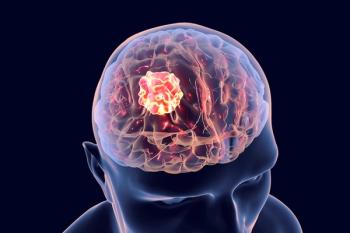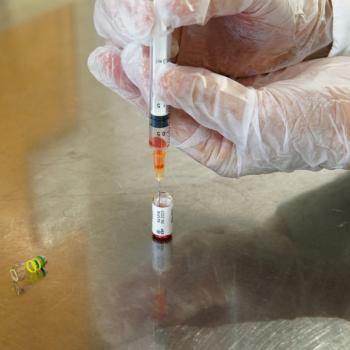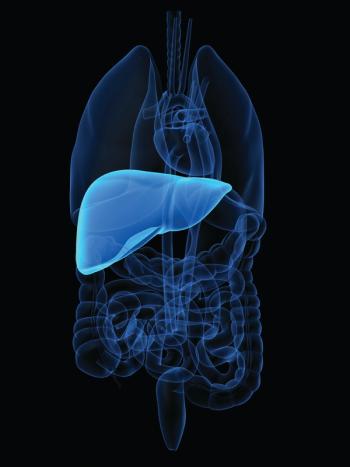
Oncology NEWS International
- Oncology NEWS International Vol 4 No 5
- Volume 4
- Issue 5
'Gene Gun' Shoots Down Tumors With Microscopic DNA-Coated Gold Bullets
TORONTO, Canada--Oncologists may someday have a powerful new gene delivery tool to help in the war against cancer--a "gene gun" that blasts pure DNA right inside tumor cells. The gun was described at a media conference held in conjunction with the American Association for Cancer Research meeting.
TORONTO, Canada--Oncologists may someday have a powerful new genedelivery tool to help in the war against cancer--a "genegun" that blasts pure DNA right inside tumor cells. The gunwas described at a media conference held in conjunction with theAmerican Association for Cancer Research meeting.
The size and shape of an ordinary pistol, the hand-held deviceis pressed against the body. When fired, a burst of helium, compressedat pressures up to 800 pounds per square inch, shoots millionsof microscopic DNA-coated gold pellets through the skin into thetumor and surrounding cells. Traveling at near-supersonic speeds,the particles can penetrate as many as 50 cell layers.
Because the gene-loaded particles pierce through cell walls, immune-stimulatinggenes such as interleukin-2, interleukin-6, and gamma interferoncan be introduced into the cells. Once inside, they instruct thecancer cells to produce and exude cytokine proteins, which, inturn, attract white blood cells to the area to attack the roguecells.
In trials on mice with tumors transplanted under their skin, treatmentwith the gene gun was found to slow down or even stop tumor growth,said Dr. Ning-Sun Yang, PhD, of Agracetus Inc, the Wisconsin biotechcompany that is developing the gun, known as Accell.
One quarter of the test mice became tumor-free, surviving morethan 60 days. "In the control group, all the untreated micewere dead in 4 weeks," he said.
Dr. Yang believes that the gun may prove superior to the traditionalways of administering gene therapy. "The device can insertgenes into the target cells in seconds," he said.
Because the gene gun uses brute force to deliver the material,the genes can bypass the receptors that guard the target cellsand often block other gene delivery methods, Dr. Yang said.
He said that the gene gun is not only powerful but also highlyaccurate, allowing scientists to adjust the spray of gold beadsto a certain cell-layer depth.
Cell membranes punctured by the beads start healing within minutes.At most, the mice only show a tiny skin rash, and sometimes noevidence of tissue injury at all, said Wenn H. Sun, PhD, a collaboratorwith Dr. Yang on the project. Dr. Sun is now at Northwestern University.
Gold is used as the DNA carrier because it is biologically inertand will not react with tissue, Dr. Yang noted. Gold also hasa high density, he said, and when it is propelled at a high speed,it reaches a higher momentum, and therefore penetrates deeperinto the target tumor-bearing tissue. This property enables scientiststo set the gene gun at a lower level of force than might be requiredwith other carriers, he added.
Each of the gold particles measures about one millionth of a meterin diameter. Dr. Yang said that if a cell were the size of anoffice building, the gold bullet would be the size of a tennisball.
The gene gun can fire 12 DNA cartridges from its chamber beforeit has to be reloaded. The force of the discharge can be adjustedso that the pellets can be targeted to tumors on or underneaththe skin. The current model is a fifth-generation version of theoriginal design. Other applications of the gene gun include vaccinationsand inserting genetic material into plant cells.
Clinical Trials Planned
While the device has not yet been used on humans, it is beingtried on dogs. And researchers hope that phase I clinical trialsin humans could begin within 18 months. William B. Ershler, MD,who is leading the University of Wisconsin team working on theproject, said that they likely will be testing the gene gun onmelanoma skin cancer, T-cell lymphoma, and breast cancer metastases.
Dr. Sun and Dr. Ershler are working with Dr. Yang to determinethe best mix of anticancer genes that can be delivered by thegene gun. According to Agracetus, the cytokine genes that haveworked most effectively in the tumor models to date are gammainterferon, tumor necrosis factor, interleukin-2 (IL-2), and IL-6.Gamma interferon and IL-2 appear to be a particularly promisingcombination.
Articles in this issue
over 30 years ago
Genetic Therapy Gets NIH Patentover 30 years ago
Fusion Product Delivers Potent Toxin to Malignant Cellsover 30 years ago
Retinoic Acid May Enhance Chemo In Ovarian Ca Cellsover 30 years ago
Compounds Block ras Gene Function Compounds Block ras Gene Functionover 30 years ago
Companies Merge to Form NeXstarover 30 years ago
Antiangiogenesis Tested in Pediatric Tumorsover 30 years ago
New Director Attends Office of Alternative Medicine Advisory MeetingNewsletter
Stay up to date on recent advances in the multidisciplinary approach to cancer.


















































































